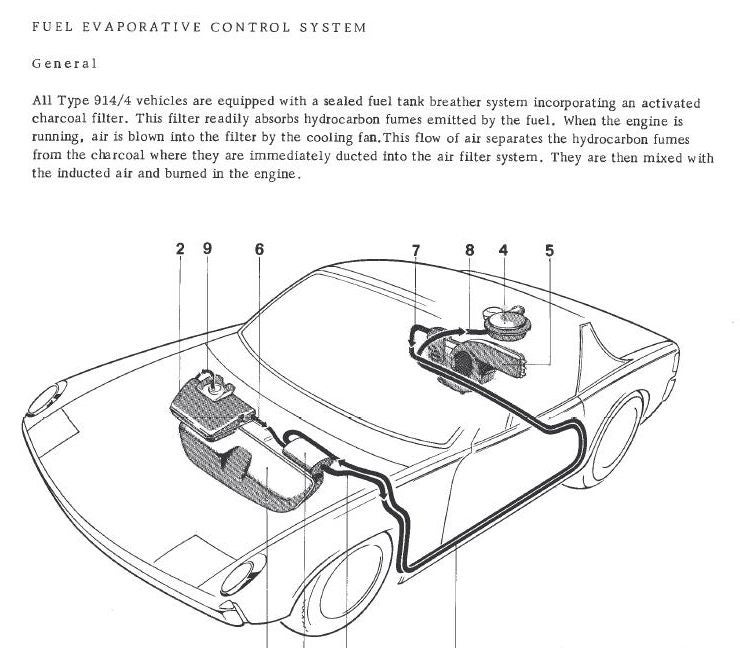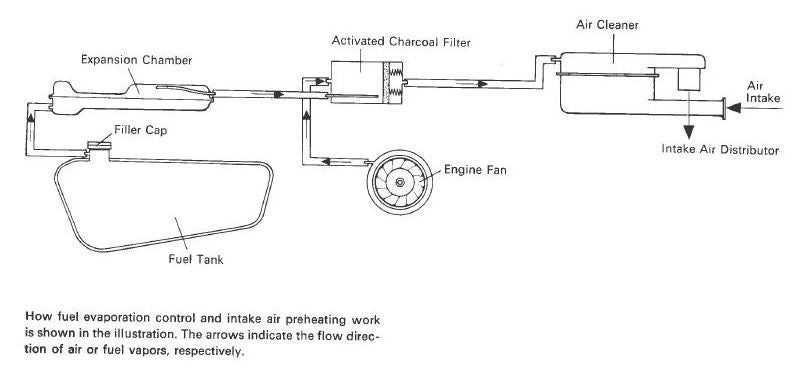 by "Chairman Kaga" (mike-mckinnon)
by "Chairman Kaga" (mike-mckinnon)
Published 04/12/2017 at 11:40
 by "Chairman Kaga" (mike-mckinnon)
by "Chairman Kaga" (mike-mckinnon)
Published 04/12/2017 at 11:40
No Tags
STARS: 1
Letís say you, or someone, accidentally mixed up the fuel send and return lines while replacing the hoses, and tried to start the car a few times before you, I mean they, had realized what theyíd done. Then letís say that car began experiencing a number of issues, like erratic and inconsistent fuel pressure and vacuum readings, to the point that it no longer ran.
Do you think maybe that fuel hose mixup wrecked the FPR? My understanding of the partís guts is that thereís a check valve that actually regulates the flow of fuel back to the tank and thus maintains consistent fuel pressure, but gets opened more or less by a spring/diaphragm thatís actuated by vacuum depending on injector duration/ignition. So itís not as if the reverse flow would LIKELY put undue stress on the diaphragm. Itís confirmed thereís no fuel leaking from the vacuum port. However, could the valve have been damaged or weakened? And that sometimes it works and sometimes it doesnít? Fuel pump is brand new, no hose leaks, no injector leaks. My friend isnít sure what else it could be.
 "RacingShark" (racingshark)
"RacingShark" (racingshark)
04/12/2017 at 12:04, STARS: 1
Thatís about the only thing I would think you could mess up.
Had a friend do this on a miata. Other than frustrating the crap out of him for hours, no damage was done. I suppose it depends on the car.
 "ITA97, now with more Jag @ opposite-lock.com" (ita97)
"ITA97, now with more Jag @ opposite-lock.com" (ita97)
04/12/2017 at 12:54, STARS: 0
The FPR would be about the only thing that would be at risk of damage. I actually did this myself during the KLZE swap on my old MX6. When I got everything buttoned up, it took me a few minutes to figure out why it wouldnít start.
 "Chairman Kaga" (mike-mckinnon)
"Chairman Kaga" (mike-mckinnon)
04/12/2017 at 13:02, STARS: 0
Well, Iím replacing it because I canít find anything else that it could be, even though the diaphragm isnít leaking gas. I mean, my friend is.
 "just-a-scratch" (just-a-scratch)
"just-a-scratch" (just-a-scratch)
04/12/2017 at 13:06, STARS: 0
Were the hoses and fuel pressure regulator reconfigured before the engine ran erratically, with inconsistent fuel pressure?
If no, go fix that first.
Was fuel pressure applied to the air/vacuum side of the diaphragm?
If yes, itís possible to have fuel trapped in some part of the regulator and causing trouble, or simply to have over stressed some part of the diaphragm.
 "Chairman Kaga" (mike-mckinnon)
"Chairman Kaga" (mike-mckinnon)
04/12/2017 at 13:17, STARS: 0
This car has had so many issues that I honestly canít say.
But no, the fuel hose was never connected to the vacuum port. The hoses were mis-connected at the hardlines at the back of the car, to the send pushed up the return line, and vice versa. The worst that could have happened was fuel at full pressure (35-36psi in this car) was forced the wrong way into the return valve. Now, since that valve is not designed to keep gas out, but rather let it in, maybe the spring was damaged? Thatís the only idea I have, short of pulling the entire fuel system and shipping the injectors off for testing. At this point, and given the age, Iíd probably just replace them. Every other component in the system is new. Pump, hoses, rail, etc.
 "just-a-scratch" (just-a-scratch)
"just-a-scratch" (just-a-scratch)
04/12/2017 at 15:17, STARS: 0
I doubt undue stress on the diaphragm is a cause here.
Letís say your regulator is set to 35 psi. If you put only 28 psig on the fuel side that enters the regulator, I would expect the valve to stay shut.
With some tees, a manual valve, a gauge, and a bucket, you might be able to do a simple pressure test on the regulator. Connect the gauge between the regulator and pressure source (pump, fuel rail, etc.) and put a manual valve to bleed down pressure somewhere else upstream. Route the discharges of the manual valve and regulator to a bucket. turn the pump on with the manual valve closed. Slowly open the manual valve and watch the pressure when the regulator stops flowing. If that pressure is below what your injectors need, you have a problem with the regulator.
I havenít tried the above myself. So, it might not work as well as I imagine. Anyway donít blow yourself up or catch on fire.
With all the extra fittings and stuff it would take, there may be an easier way. Like, maybe, just buy a new regulator.
 "Chairman Kaga" (mike-mckinnon)
"Chairman Kaga" (mike-mckinnon)
04/12/2017 at 17:29, STARS: 0
Yeah. Iím choosing Option B. Worst case scenario Iím out a few bills and end up with a working spare, which is never a bad idea when you own an Alfa Romeo.
 "gmporschenut also a fan of hondas" (gmporschenut)
"gmporschenut also a fan of hondas" (gmporschenut)
04/12/2017 at 21:16, STARS: 0
what kind of car?
A lot of older cars had a charcoal canister. If the vacuum lines get swapped, youíll get no flow to the engine. I know for 914s if the canister is reversed it can get jammed and needs to be replaced. †


 "Chairman Kaga" (mike-mckinnon)
"Chairman Kaga" (mike-mckinnon)
04/13/2017 at 10:07, STARS: 0
Ď82 Alfa GTV6. The model didnít get the canister until Ď84. The plenum plumbing was changed pretty drastically that year, too.
I did remember that maybe around the time this started I installed a new distributor rotor, as mine was cracked. It was a different piece, supposedly the correct piece from an actual Alfa parts supplier, but I also know the distributor changed in Ď84 as well, replacing the old-style vacuum retard with a vacuum advance. I just wonder if MAYBE I didnít get the correct rotor and thatís causing the problem? Letís be clear - I really donít believe that a piece of bakelite with a copper bit on the end will cause the kinds of problems Iím having, but Iíll pull the old part (itís still usable) and give it a whirl.
If I can get the car to idle long enough Iíll recheck the timing. Might as well check the cam timing too. Maybe the belt slipped and thatís causing a loss of vacuum, which is causing the FPR to misbehave as well as just run like crap.
I dunno.